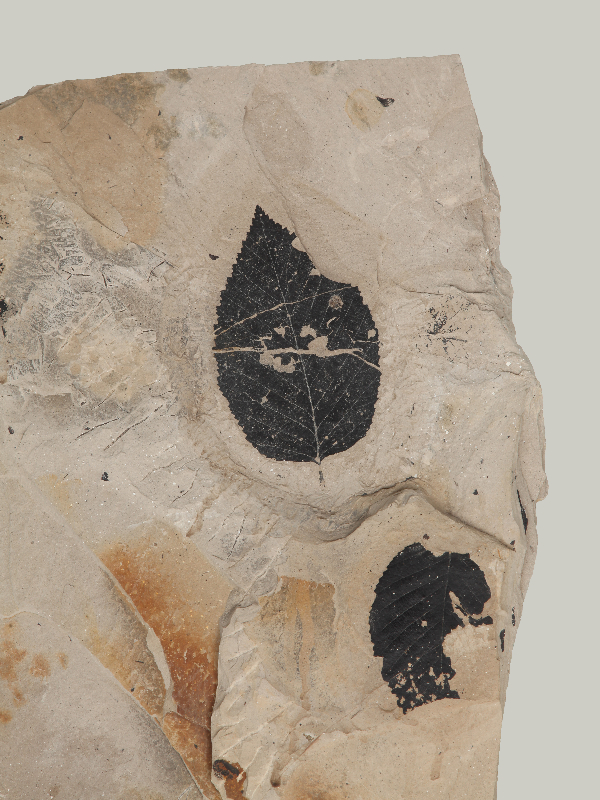- 資料名
- タカヤスニレ
- 展示の有無
- 有
- 地質時代
- 第三紀中新世
- 地層名
- 阿仁合層
- 資料解説
-
タカヤスニレは阿仁合型植物群の特徴種の一つ。現生のハルニレと類縁関係にある。
阿仁合型植物群は、秋田県北秋田市阿仁地区の阿仁合層より産する植物化石群。約2500万~約2000万年前の地層から見つかる植物化石で、おもに落葉広葉樹と針葉樹からなる温帯林の組成を示す。同様な植物群は、北海道、本州、朝鮮半島など各地で見つかっている。
おもな構成種はトウヒ、カバノキ、マツ、ブナ、ニレ、カエデなど。
The Ulmus takayasui is one characteristic of the Aniai plant community (phytocoenosis). It lives in close relationship with Japanese elm.
The Aniai plant community is a group of plant fossils found in the Ani mixed layer formation located in Ani, Kitaakita, Akita. This is a plant fossil found in a stratum dating approximately 20-25 million years ago. It is contains mostly the leaves of broad-leaved trees and coniferous trees from temperate forests. Similar plant groups are found around Hokkaido, Honshu and the Korean Peninsula. The group is mainly composed of Picea jezoensis var. hondoensis, Betula, Pinus, Fagus crenata, Ulmus, Acer, etc.


